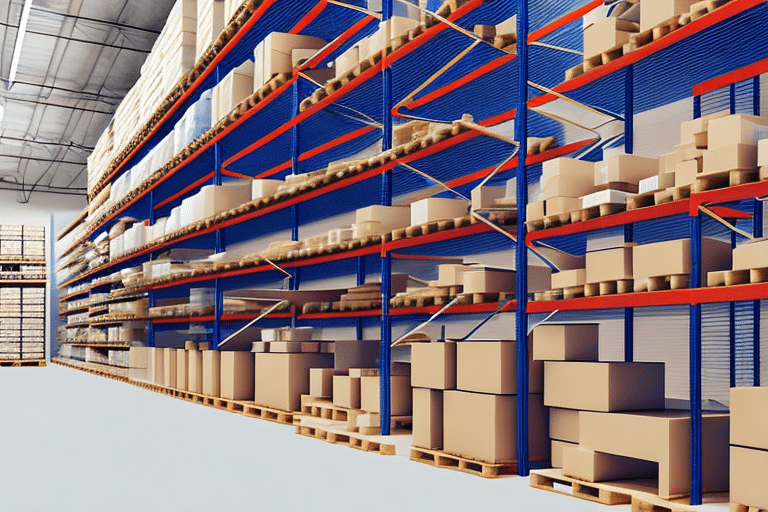The Importance of Logistics in Manufacturing
Logistics is the backbone of manufacturing, influencing everything from cost efficiency to customer satisfaction. Effective logistics management ensures that goods move seamlessly from raw material acquisition to final product delivery, directly impacting a company's bottom line and competitive edge.
Key Benefits of Efficient Logistics
- Cost Reduction: Streamlined logistics can significantly lower operational costs by optimizing transportation routes and reducing waste.
- Enhanced Customer Satisfaction: Reliable and timely deliveries build trust and loyalty among customers.
- Inventory Optimization: Efficient logistics help maintain optimal inventory levels, minimizing both stockouts and overstock situations.
Impact on Customer Satisfaction
Fast and dependable logistics lead to shorter lead times, enabling manufacturers to meet customer demands promptly. According to a 2023 industry report, companies that prioritize logistics optimization see a 20% increase in customer retention rates.
Challenges in Manufacturing Logistics
The manufacturing sector faces numerous logistical challenges that can hinder efficiency and profitability. Understanding these challenges is the first step toward developing effective solutions.
Supply Chain Disruptions
Global events, such as pandemics or geopolitical tensions, can disrupt supply chains, leading to delays and increased costs. Diversifying suppliers and increasing supply chain visibility are crucial strategies to mitigate these risks.
Balancing Cost and Speed
Manufacturers must find the right balance between cost-efficiency and delivery speed. While customers demand quick deliveries, maintaining low costs requires careful planning and optimization of logistics processes.
Environmental Considerations
With growing emphasis on sustainability, manufacturers must adopt eco-friendly logistics practices. This includes reducing carbon emissions through optimized routing and utilizing green packaging materials.
Strategies for Optimizing Logistics
Implementing effective strategies can transform logistical operations, leading to significant improvements in efficiency and cost savings.
Streamlining the Supply Chain
Optimizing the supply chain involves enhancing the flow of materials, reducing lead times, and minimizing waste. Lean manufacturing principles can be instrumental in achieving these goals.
Implementing Lean Manufacturing Principles
Lean manufacturing focuses on eliminating waste, reducing cycle times, and improving product quality. Techniques such as value stream mapping and 5S workplace organization are essential for successful implementation.
Inventory Management Best Practices
Effective inventory management ensures that the right amount of stock is available when needed. Strategies like just-in-time (JIT) inventory and ABC analysis help in maintaining optimal inventory levels and reducing carrying costs.
Transportation Management
Optimizing transportation involves selecting the most efficient routes, consolidating shipments, and collaborating with reliable carriers. Utilizing a Transportation Management System (TMS) can streamline these processes.
Just-in-Time Inventory Systems
JIT systems minimize inventory levels by coordinating production schedules closely with supplier deliveries. This approach reduces storage costs and increases responsiveness to market demands.
Warehousing and Distribution Optimization
Optimizing warehousing involves improving space utilization, automating inventory tracking, and enhancing order fulfillment processes. Advanced warehouse management systems (WMS) play a vital role in these improvements.
The Role of Technology in Logistics Optimization
Technology is a key enabler of logistics optimization, providing tools and systems that enhance efficiency, transparency, and decision-making.
Advanced Tools and Software
Modern logistics relies on sophisticated software solutions like TMS and WMS to manage and optimize various aspects of the supply chain. These tools offer real-time data and analytics, facilitating informed decision-making.
Automation and Artificial Intelligence
Automation technologies, including robotics and AI, streamline repetitive tasks and improve accuracy in logistics operations. AI-driven analytics can predict demand patterns and optimize inventory levels, as highlighted in a recent study.
Enhancing Supply Chain Sustainability
Technology also supports sustainability initiatives by enabling better tracking of carbon footprints and promoting the use of sustainable materials. Tools like carbon footprint calculators help manufacturers assess and reduce their environmental impact.
Measuring and Improving Performance
Continuous improvement in logistics requires ongoing performance measurement and analysis. Key Performance Indicators (KPIs) provide valuable insights into the efficiency and effectiveness of logistics operations.
Key Performance Indicators (KPIs)
- On-Time Delivery: Measures the percentage of deliveries made on schedule.
- Cycle Time: Tracks the time taken to complete a particular process from start to finish.
- Inventory Accuracy: Assesses the precision of inventory records compared to actual stock levels.
- Transportation Cost per Unit: Calculates the cost associated with transporting each unit of product.
Case Studies
Examining real-world examples provides practical insights into successful logistics optimization. For instance, a manufacturer implementing a TMS saw a 15% reduction in transportation costs and a 10% improvement in delivery times (Case Study 1).
Future Trends in Logistics Optimization
The logistics landscape is continually evolving, driven by technological advancements and changing market demands. Staying ahead of these trends is essential for sustained efficiency and competitiveness.
Increased Automation
Automation will play an even larger role in logistics, with advancements in robotics and autonomous vehicles revolutionizing transportation and warehousing.
Advanced Analytics and AI
The integration of AI and machine learning into logistics will enhance predictive analytics, enabling more accurate demand forecasting and inventory management.
Expansion of Last-Mile Delivery Options
As e-commerce continues to grow, innovative last-mile delivery solutions, such as drone deliveries and smart lockers, will become increasingly important.
Sustainable Logistics Practices
Environmental sustainability will remain a key focus, with manufacturers adopting greener logistics practices to meet regulatory requirements and consumer expectations.
In conclusion, optimizing logistics in manufacturing is vital for achieving maximum efficiency and long-term success. By understanding the manufacturing process, addressing key challenges, implementing best practices, leveraging technology, and continuously measuring performance, manufacturers can streamline their logistics systems, reduce costs, and enhance customer satisfaction. Embracing future trends will further ensure that logistics operations remain resilient and adaptable in an ever-changing industry landscape.




















